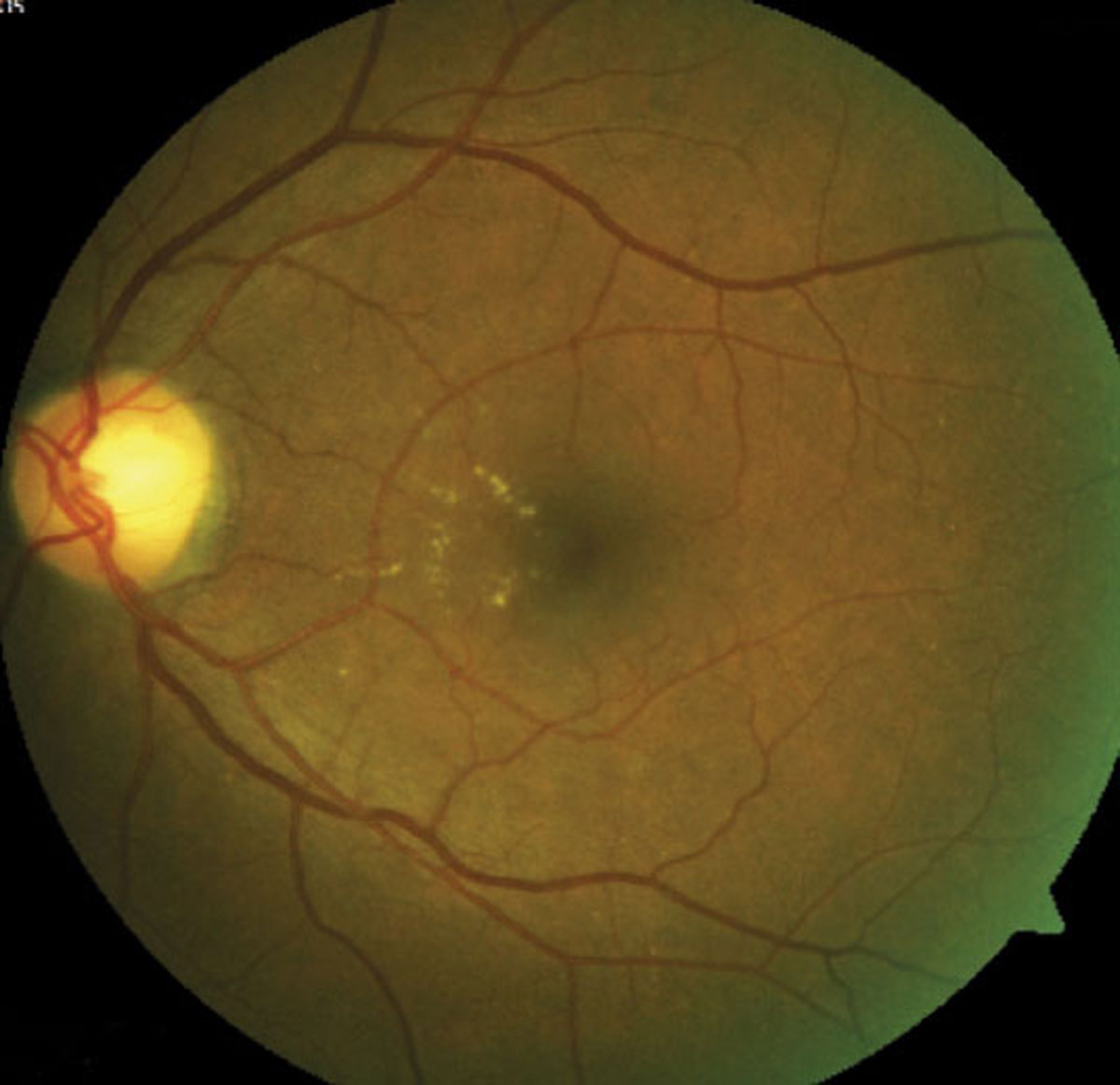 |
Efforts to ensure a fluid-free macula will help optimize visual outcomes. Photo: Julie Torbit, OD, Anna Kathryn Bedwell, OD, Daniel Bollier, OD, and Brad Sutton, OD. Click image to enlarge. |
It is unclear how visual outcomes vary between patterns of macular edema (ME) resolution in eyes with central retinal vein occlusion (CRVO). In an attempt to better pinpoint these correlations, researchers assessed best-corrected visual acuity (BCVA) outcomes at 100 weeks based on macular fluid resolution patterns by 52 and 100 weeks among patients receiving anti-vascular endothelial growth factor therapy for CRVO-related ME.
This post-hoc analysis of the prospective, three-arm, double-masked, randomized noninferiority trial Lucentis, Eylea, Avastin in Vein Occlusion (LEAVO) evaluated intravitreal aflibercept (2.0mg/0.05mL), bevacizumab (1.25mg/0.05mL) and ranibizumab (0.5mg/0.05mL) over 100 weeks. Patients were adults with CRVO-related ME and a BCVA ETDRS letter score of 19 to 78 in the study eye from December 2014 to December 2016 at 44 UK National Health Service ophthalmology departments. A total of 140 of 154 eyes were randomized to aflibercept, 144 of 154 to bevacizumab and 141 of 155 to ranibizumab.
Persistent ME included eyes with central subfield thickness (CST) 320μm or greater, and persistently dry macula (no ME) included eyes with CST less than 320μm at 52 and 100 weeks. Recurrent ME included eyes that did not meet the criteria for persistently dry or wet ME.
The mean age of the 425 included participants was 69.2 years, and 243 (57.2%) were men. A total of 425 eyes were included.
By 100 weeks, 117 eyes (28.5%) were persistently dry, 44 (10.7%) were persistently wet (with ME) and 250 (60.8%) had recurrent ME. Persistent ME at 100 weeks was associated with worse VA compared with dry macula (adjusted difference -10.98 ETDRS letters) and recurrent ME (adjusted difference -5.39 letters). By 52 weeks, individuals with persistent ME also had poorer 100-week BCVA compared with individuals with dry macula (adjusted difference -7.39) and recurrent ME (adjusted difference -3.92). By 100 weeks, more eyes treated with bevacizumab had persistently wet macula than those treated with aflibercept (26 of 140 [18.6%] vs. seven of 134 [5.2%]) or ranibizumab (11 of 137 [8%]).
“These findings suggest that attempts should be made to maintain persistently fluid-free macula for optimal visual acuity outcomes.”
Gurudas S, Patrao N, Nicholson L, et al. Visual outcomes associated with patterns of macular edema resolution in central retinal vein occlusion treated with anti-vascular endothelial growth factor therapy. JAMA Ophthalmol. January 6, 2022. [Epub ahead of print]. |

